 Captain Albert Schoonderbeek
Captain Albert Schoonderbeek
Sailing through Steno Elafonisou turned out to be a pleasant surprise. There were a lot of ships but most of them were going with us in the same direction and we were able to overtake them as we were going full out to make up for our delayed departure from Piraeus. The only moment of excitement came when a car carrier next to us confused changing course to starboard with changing course to port and suddenly started to come in our direction. However before I could pick up the VHF and ask him what he thought he was doing, the error was obviously detected and we saw a rather fast course change to starboard. From then on all was well in the world. Opposite traffic mainly consisted of three cruise ships, the Crown Princess, the Ruby Princes, the Noordam and one small coaster.
The Noordam did have to change course, as the ship had to deal with the other ships coming through behind the Prinsendam; ships going our way and two of them were coming around the corner in tandem (e.g. next to each other). So we saw him making a rather large course change, way, way away from “the Holland America Line” as we call it, to avoid getting into a muddle with those ships. Going through these Straits with so much traffic calls for a different way of navigating compared to open sea. In the open sea, you give other ships lots of room, mainly because you do not know if they are paying attention to what is going on and because you have room; so why make things complicated. In confined areas the game is different. First of all you know that the other ships are paying attention to what is going on because of the confined nature of the area. Then the area dictates which courses all the ships have to run in order to get through. Thus the most important elements are, a. ensure that you get through by following the intended track as far as possible; b. check that other ships are doing the same thing; c. anticipate the moment the other ships will change course, or have to change course, by evaluating the issues that those other ships might have with other ships.
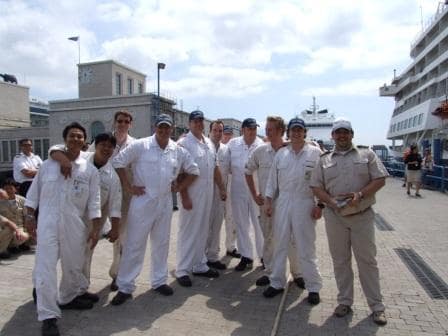
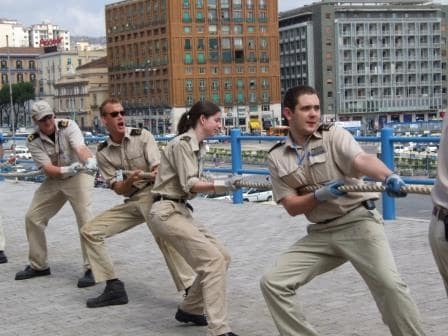
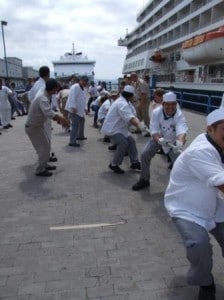
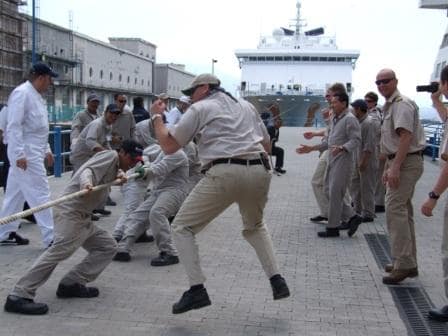
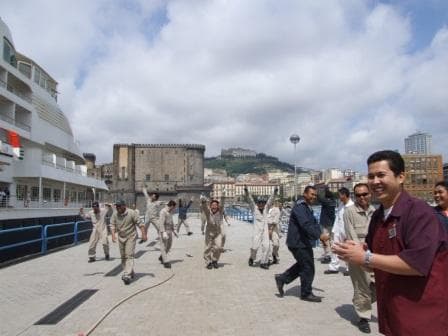
The latter is where I come in. The Officer of the Watch has the Conn. This means he decides when he has to change course and how. The Assistant of the Watch runs the bridge (plotting, communication, fire alarms etc etc.) I check to make sure that what the OOW is doing works out in relation to the other ships. The course line through such a busy area is the reference line that we go by. We are seldom sailing on that line but we generally follow its direction as we know it is the safest route. As the other ships will do something similar, we are normally off that line to a certain extent. We have the maximum margins noted in the chart. As long as we are within those parameters, we are fine.
So while the OOW is focusing on the safe passage of his own ship and to get it through the strait, I am imagining being on the bridges of the other ships. Those ships that might become an issue for us now or later. By looking at the radar plots of all the ships around, you can get quite a good idea about what that other ship, the one that is close to you might have to do in case a situation develops for that ship. Quite often you can help by giving a bit of extra space to that ship and then also prevent a problem for yourself later on. It is a bit of relative thinking on several levels at the same time.
This time we breezed through and spent an un-eventful day in the Ionian Sea. The sun was shining and the westerly swell that was running diminished in the late afternoon.
We sailed through the Strait of Messina at 20.00 hrs. with the sun setting on Sicily so all the guests had another beautiful look at the Strait and Calabria. The current was very strong today, almost 5 knots against us and thus we plodded through there with 12 knots of true speed. Tomorrow we are in Naples which is the final port of our cruise. Once again the weather will be perfect.
To access Captain Albert’s historical writings on Holland America Line as well as photos and additional information about Prinsendam and his sailing schedule, click here.

Leave a Reply